Jan Carson's Blog, page 2
January 11, 2020
Postcard Stories From Paris – Week One
While I’m in Paris, I’ve been writing a Postcard Story every day based on the art I’ve been able to see. It’s been a great excuse to get out and visit some of the city’s amazing museums. Here’s my first week of tiny art stories.
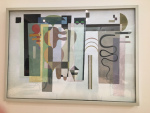

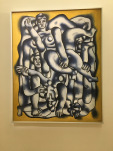
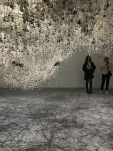
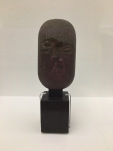
1st January 2020
Paris, France
Maureen Robinson
Late-ish for a Kandinsky, Deux Points Verts -or Two Green Points, to give this painting its cumbersome, English dues- is composed of overlapping coloured strips. To the left of the canvas the tones are bolder: black and green, with a mustard red dollop like leakage from a cheap hamburger or the ghost of hedonism past. If this is youth, the mid-section’s beauty and formed from custardy pastel blocks. It is possible with light, or gently squinting, to romance the outline of four soft hearts and, to the right, where the fourth heart’s dripping, the whimsical notion of a kite. If this is beauty, then loss must follow, for Kandinsky was fading by this point. The final third is marked by the absence of colour: white, more white and beige, a pink, so pale it’s barely breathing, and gray, which is colour’s poor shadowy twin. A black snakes corrugates though these last dull panels, its splayed jaws stretching beyond the pink to nip the canvas edge. And what of the afore-mentioned points? Where does Kandinsky situate them? Look to the section where the colours are kindest. Look to the space above those sweet hearts. Note two green dots, like a drunken colon, where temptation first sinks its poisoned fangs in.
2nd January 2020
Paris, France
Ciler Ilhan
It is cold in Paris and recently raining. From the fifth floor of the Centre Pompidou the skyline looks to be sepia-tinted, like a snapshot taken in Victorian time. The Tower’s part ghosted by the clouds. The Seine’s a mere smudge on the camera lens. Meanwhile, back at the Pompidou, the west terrace is running slick with puddles. Damn the tourists and their Iphones. It’s maintenance only outside today. Which doesn’t stop the tourists hovering round all four sides of the terrace, pressing their phones against the glass; to Hell with flashback and window flare. In the courtyard, glassed like the exhibits they actually are, Henri Laurens’ enormous nudes squirm and contort their thick bronzed limbs. Arms wrapped like bandages round their torsos, knees drawn primly to their shins, they are sculptures first and statues second. Making it impossible to read their dead pan faces, their lips reduced to blockish lines, foreheads like cliffs, eyes like stuck on pistachio shells. Body language can only say so much when you’re cast in metal and stuck both-footed to a plinth. Perhaps the nudes are mortified by all this staring. Perhaps they’re trying to cover their shame. Or maybe, they’re just like the rest of us; doing whatever they can to stay warm.
3rd January 2020
Paris, France
Marta Dzido
I’ve stood for ages in front of Fernand Leger’s “Acrobates en Gris,” carefully counting. Three nude women in various shade of photocopier gray are tangled together against a mustard backdrop, their limbs creating the semblance of a rectangle. And while it seems like there are too many shoulders for the three stony faces glaring back at me, sure it’s almost impossible in an orgy set-up, to tell a shoulder from a knee or any other folded joint. It’s the hands that are really bothering me. I’ve counted clockwise round the frame at least a dozen times or more. The museum’s attendants beginning to hover suspiciously. It’s like untangling skeins of wool or tracing your way out of a children’s maze. Here’s a hand, and here’s a second, and there are six more. That makes eight. Which is two too many for a beast that’s only got three faces and a correctly apportioned half dozen feet. The extra hands aren’t the worst of it. Leger paints breasts like small, French boules, balanced awkwardly upon the chest, and les trois acrobates I’m currently scrutinizing appear to be juggling just four such rounds between the three of them. Now, I’m frozen in front of the painting, wondering which I’d rather- extra hands or missing breasts?
4th January 2020
Paris, France
Micheal McCann
This afternoon I’m drinking coffee in a café in Montparnasse. I’m thinking about the French-Hungarian sculptor, photographer and writer Brassai who moved to this neighbourhood in 1924 and taught himself how to speak and write French by meticulously reading Proust. Which led, no doubt, to verbosity and an inability to be concise. Note, if you will, the writer, Henry Millar’s bold claim in 1976 that Brassai’s biography of his life was padded, full of factual errors and false impressions not based on fact. Had he not been dead already this nod to Brassai’s many faults, might have been a passing comfort to Ambrose Vollard, the French art dealer whose likeness Brassai sculpted posthumously, sometime around 1950. In this piece, which is now mounted on a wooden stand and displayed within a small, glass case, the poor chap looks like a baked potato who’s gone twelve rounds with a bigger spud.
5th January 2020
Paris, France
Liz Nugent
Henri Matisse- Le violiniste a la fenetre. (Spring 1918)
The violinist is at the window. The violinist is a man. The violinist has his back to me. The violinist is possibly shoeless or wearing socks the colour of skin. The violinist is standing upon a terracotta floor. The violinist may or may not be suffering from cold feet. The violinist is looking through the window, past a balcony and a hedge. The sky beyond is fire red. The violinist thinks the sky is burning. The violinist doesn’t really care so long as it does not stop him playing. The violinist plays violin music. Though I’ve no way of knowing which piece or tune, it is inferred in the way the violinist is gazing upwards, whilst holding his arm at a jaunty angle, that this is not a melancholy air. The violinist is probably thinking, “I am glad that I’m not a pianist for it would not be possible to stand in this window, playing music on a piano, watching the sunset gently burn.”
6th January 2020
Paris, France
Amina Jama
Guiseppe Penone – Respirare Lombra. (1999-2000)
A room constructed of chicken wire and half a million dry bay leaves should not make you want to weep. It’s not the smell of your mother’s spice rack, or your grandmother’s larders, or a forest towards the end of summer, though each of these is a sentiment. Nor is it the sound, which is silence padded, so you hear for the first time in several months, your own voice simmering inside your head and perhaps admit -for there’s only leaves listening- that it is reluctant and a little sad. Neither is it the thought of Australian forests, flaming on the other side of the world, though this thought, if allowed to settle, is enough to make the whole gallery weep. No, it’s something to do with the rhythm; the sound of your own lungs losing air. And if the artist happens to claim, that men and trees breathe to a different rhythm, you’d have to agree he’s on to something. You can feel it here, in this parchment room; the distance looming between created things.
7th January 2020
Paris, France
Anja Ivic
If my French is to be trusted, then Maya Dunietz’s 2016 installation, Thicket is constructed from eleven thousand five hundred sets of white plastic headphones, woven together in a back lit cloud. The lump of it wilting delicately from the ceiling resembles a dollop of unbaked meringue or some drunken notion of a chandelier. The floor’s a frenzy of tangled shadows -branched, broken, criss-crossed, spliced- like the shattered windscreen of a car. The room seems cold, though it is isn’t. There’s an assumption here of frost. And the sound is similarly icy. It zips. It buzzes. It occasionally trings. It pursues me round the gallery like an insect trapped inside the ear. All this to say, it should be dreadful. It should be feedback and tinnitus and that static hum when the TV runs out. It should feel like an itch inside the brain. Worse still, it should speak of every lead I’ve ever tangled, ever necklace, thread and cord; the actual cheap, white, plastic headphones currently lying at the bottom of my bag, hopelessly knotted around my house keys and a biro I nicked from a German hotel. But it doesn’t. It isn’t. It’s somehow holy; this space saturated with cheap white noise. It goes against the laws of logic. Ugly on ugly on ugly on ugly eventually equates to sublime.
January 9, 2020
Albert’s Fancy Ran to a Puma
[image error]
Astley Priors was a prime location for a stake out. Being a red brick house of solid girth and at least two substantial storey’s height it offered all the space a discerning villain might need to conceal several loutish henchman, a kidnap victim and at least one amateur detective gone rogue. Tommy felt certain, -or if not certain, then hunched on the notion- that the building might well be the key to this case. And wasn’t it the perfect set-up? You couldn’t pick a better house, what with all those floor-to-ceiling windows, each one helpfully lit, and the shrubbery running ‘round it like a mote. So many bushes to hide behind. Not to mention those well-wooded grounds, edging the lawn on all three sides. A chap in possession of binoculars could fairly make use of those climbable trees. Yes, Tommy was tickled pink by Astley Priors. As Albert and he peered through the fence, he felt for the first time, an actual sleuth of the sort who appear in the threepenny novels he’d positively devoured as a young lad. Tommy wondered for a moment if he should change his name to something better suited to a private-eye. Hank perhaps. Or even Frankie. Definitely an American name.
Everything was going swimmingly. Tommy let the evening’s plan run through his head. They’d scale the fence. They’d cruise the joint. They’d find all the evidence required. If all went well, and there was no reason to believe it wouldn’t, they’d be home in time for an early night.
“Come on Albert,” he whispered to his sidekick and braced his foot against the fence.
But Albert wasn’t in quite such a rush. Albert was lingering by the climbable trees. Albert was fiddling with his laces. Albert was turning parchment white.
“What if they’ve got something guarding the place?” he whispered anxiously.
“You mean someone,” said Tommy, relishing the thought of a loutish henchman, most likely Irish for the Irish made for stellar louts.
“No! I mean something!” insisted Albert. He raised his hands and clawed about in front of his face, whilst emitting a kind of animal snarl.
“Like a guard dog?”
“A guard dog would be grand. I’m good with dogs, Tommy. My nan’s got one of them Pekineses. It’s just, what if they have something more exotic in there?”
“Like what, Albert?”
Albert’s fancy ran to a puma, or a tame cobra, or perhaps a kind of dragon. He hadn’t ruled out the possibility of dragons, or other supernatural beasts. For while Tommy got his kicks from detective novels, Albert was absolutely doolally for paperback adventures and gothic tales. He did not see in Astley Prior the perfect spot for a detective stake out, so much as the makings of a haunted house. Historical building. Attic. Cellar. All those shadowy, wavering trees. The place was probably rife with ghosts, or if not ghosts, then other beings; things that were better left alone. In fact, if Albert wasn’t greatly mistaken, there was some kind of giant serpent, slouching about in the shrubbery. Albert would not admit to being frightened but Albert wasn’t for scaling that fence tonight. They could wait ‘til dawn if Tommy insisted on going in. “Sure, it’ll be easier to see when it’s light,” he said, “and we won’t have to worry about ghosts or vampires, ‘cause them lot only come out at night.”
Tommy had half a mind to slap the boy though he couldn’t risk the racket this might cause. “Suit yourself,” he said to Albert as he scaled the fence in a somewhat ungainly manner. This was not going as he’d imagined. A detective was lost without his sidekick. Who was going to cause a diversion whilst he slipped unseen through the pantry door? Who would make surreptitious bird noises beneath the window when the villain returned unexpectedly? Who was going to call him Old Chap and stand him a pint when the case was closed? No one. That much was obvious. Tommy paused on the edge of Astley Prior’s modest lawn. He made a slight amendment to his thinking. He would now be one of those hard-boiled detectives, the sort who always worked alone.
Based on Agatha Christie’s 1922 novel, The Secret Adversary
Dropped at Shakespeare and Co bookstore, Paris, France on Tuesday 7th January 2020
#MyYearWithAgathaC
January 8, 2020
A Week in Paris


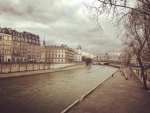
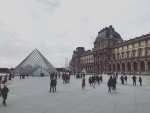
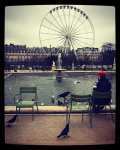
It’s a week tomorrow since I arrived in the Centre Culturel Irlandais, Paris after hauling my enormous suitcase through the transport strike crowds at the Gare du Nord. I’m spending a month in residence here and, now I’ve finally settled in, I thought I’d give you a quick overview of what I’ll be up to whilst in Paris.
Firstly, I’m working on a series of new Postcard Stories, all based on individual art works exhibited in Paris. I sent the first batch out this morning and it’s already been a great excuse to visit some of the city’s incredible galleries and museums. I’m specifically looking for stories in the pieces which might often be overlooked so this month, you’ll mostly find me in the tiny little rooms at the back of the Louvres or scribbling away in some of the more obscure museums. Three down. About a million to go.
Secondly, I’m working on a YA novel. I keep working on YA novels and giving up because they are desperately difficult to write. But this particularly idea’s been trailing me around for months and months now and this residency has given me the perfect opportunity to sit down with the concept, write into the characters and see if there’s anything worth developing here. I’m ten thousand words in and I do not hate it yet but my personal wall’s always been around about the twenty thousand word mark, so maybe come back to me next week and see if it’s still going swimmingly.
Finally, I’m reading a lot. There’s an amazing Irish literature collection here at the CCI and once I get through the backpack of books I’ve hauled with me, I’m going to be ransacking the collection for novels I’ve always meant to get round to reading. I’m also continuing with my Agatha Christie project. I’ve just been informed that it’s 100 years since her first book was published and my project’s a great way to celebrate that. I’m going to pretend that this has always been my intention. If you don’t know anything about #MyYearWithAgathaC you can read about it here on my blog and keep an eye out for the little fan fiction stories I’ll be dropping around Paris this month. I’m also hoping to get to some readings at Shakespeare and Co, maybe visit some of the city’s best cinemas and of course sample as much of the food and wine as I can.
[image error]
I’ve been reading Agatha Christie’s autobiography in instalments, (it’s quite the beast), this week and loved this section about self-awareness.
I remember seeing my own grandson Matthew when he must have been, I suppose about two and a half. He did not know I was there. I was watching him from the top of the stairs. He walked very carefully down the stairs. It was a new achievement and he was proud of it, but still somewhat scared. He was muttering to himself, saying: “This is Matthew going down stairs. This is Matthew. Matthew is going down stairs. This is Matthew going down stairs.”
I feel a little bit like Matthew going down stairs this week. Writing in Paris is the sort of thing writers in movies do. It doesn’t feel real. One week in and I’ve not yet relaxed. It’s a new achievement, all this sitting in cafes, scribbling in notebooks, attempting to look like the genuine article. It feels as if I’m acting the role of someone who’s a writer, writing in Paris, where you’re meant to write. I’ve a little voice constantly running through my head. “This is Jan writing in Paris. This is Jan writing in Paris.” I have not been this self-conscious for years. I’m also tripping over and bumping into way more things. Everything feels like a scene from a film and I’m not sure who I’m playing yet.
Last night I went to hear the American author John Freeman speak in Shakespeare and Co, (the voice in my head ran a running commentary throughout, “This is Jan going to a reading in Shakespeare and Co. This is Jan becoming a big cliche of herself,”). I found myself talking to another writer in the line, a nice non-fiction writer from NYC, both of us tripping over ourselves to establish we were proper writers, with actual published books, not just the sort of people who come to Paris to be writers and go to readings in Shakespeare and Co. I could hear other people in the line having similar conversations. Clearly, there’s a lot of self-conscious writers knocking around. Anyway, all this to say. I’m not quite myself in this city yet. It may take a few more days to turn off my inner narrator and just eat baguettes, and drink good wine, and go to the Louvre and write my stories without noticing every little move I make.
I will check in next week with further updates. By then I hope to have made more progress with my French. I’m trying but the Ballymena’s wild strong in me. Like today I spent five full minutes trying to tell the woman at the Post Office that I wanted eight stamps for my postcards. In the end I resorted to holding up eight fingers. “Ah,” she said, in equally woeful English, “nine,” and handed me twelve stamps. This is typical of my interactions so far. Fingers crossed I will soon assimilate.
January 4, 2020
Mrs Inglethorpe Recites a War Poem
[image error]
Mrs Emily Inglethorpe of Styles Court, Essex stands at the front of the village hall. As she clears her throat and clasps her hands, rows and rows of cheap-hatted locals gaze up at her, their faces pinking in the heat. They’ve endured the music and the speeches. They’ve mourned the absence of refreshments. They’re used to this, on account of the War. They’ve been waiting all night on stiff-backed chairs for Mrs Inglethorpe to recite her poem. The war poem, presented by the lady from the big house, will be the highlight of the evening’s entertainment. It should be noted, this village is rather small and provincial.
The locals are hoping Mrs Inglethorpe will recite The Charge of the Light Brigade. She did this poem last year, with great aplomb. She has the perfect voice for it, which is to say plummy and terribly English, like someone you’d hear on the wireless. It’s such a familiar piece and also rousing, just the ticket for a sweltering evening, late into an equally sweltering War. For God’s sake, the locals are now thinking, don’t let the old dame attempt anything avant garde. These modern young poets, with their dreadfully modern takes on war, are an affront to the boys they’ve sent away: the sons, the brothers and occasionally husbands, who may or may never return from the Front. They needn’t worry. The year is 1917, possibly even late 16. Owen and Sassoon, (the worst offenders), have only recently met in the corridors of Craiglockhart. Their poems are not yet widely read. They’re only just beginning to strip the glory out of war.
Mrs Emily Inglethorpe, formally Cavendish, scans the room in front of her. Though she’s anxious in herself, and already thinking of changing her will, she doesn’t know that this is to be her penultimate night on Earth. Which begs the question, does it not, if a woman like Mrs Inglethorpe were to be offered a glimpse into the immediate future -the betrayals, the poisoning, the slow and excrutiatingly painful death- would she choose to spend her last free evening reciting a dusty war poem in a provincial village hall? Or, would she perhaps, be better served, dancing and drinking neat little nips of port and whiskey served in cutglass tumblers by uniformed serving girls, cursing God or cursing those gods of English peerage who enjoy nothing better than planting a bad seed in every branch of the family tree? Would it be a better use of Mrs Inglethorpe’s time to spend one last night with her very young husband, rolling round the very same bed where she’ll die tomorrow of strychnine poison, administered by his hand?
Perhaps. One can never quite know the inner workings of those characters who cruelly disappear from a novel’s pages less than three chapters in. Still, reciting a war poem at a charitable entertainment, seems an awfully lame way to make an exit from this mortal stage. Besides, what exactly does Mrs Inglethorpe know of war? She is a woman after all. She knows little beyond her family. Would she not be better, before they have the chance to kill her, to gather the bastards in the library and recite, with signature aplomb, how each in their own peculiar way has been a shame, a horror, and an abomination; a kind of death she’s had to endure.
Based on Agatha Christie’s 1920 novel “The Mysterious Affair at Styles”
Dropped at Terminal 2 Departure Lounge, Dublin Airport on January 2nd 2020
#MyYearWithAgathaC
December 31, 2019
What I Read And Liked In 2019
I’m leaving it to the final hour to submit my list of the best books I read this year and I’m kind of glad I did as a couple of stunner crept in in the last week. It’s been a fantastic year for reading. I managed to muddle my way through 225 books. I discovered Cynan Jones and devoured almost all his books in a year. I made my way slowly (very slowly), through all the Harry Potter books and while I’m no HP convert, (No. 4’s the only one I liked and don’t get me started on lac of editing in the final 3), I am now the world’s best auntie, able to converse about all things Quidditch with some level of proficiency. I did my best to read more works in translation and enjoyed 25 books by authors I might not otherwise have read. It was also a bumper year for great non-fiction and some fantastic short story collections. I’ve listed my favourite reads below in the hope there might be something here you might enjoy. You’ll notice they weren’t all published in 2019 but I’m a great believer in reading intuitively and if it’s a good book this year, it’ll still be a great book when I eventually get round to reading it. Here’s to great books in 2020 and supporting your local bookshops and libraries. A huge thanks to David at No Alibis and Bob at Gutter, who’ve kept me well-supplied and to all the various publishers and agents who’ve sent me wonderful new proofs to read.
Here are my reading statistics for 2019:
121 Novels
31 Short Story Collections
40 Works of Non-Fiction
32 Poetry Collections
25 Works in Translation
48 Books by Irish Writers
129 Books by Women
Novel of the Year (Sorry couldn’t pick between these two):
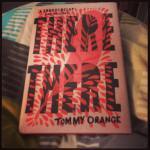
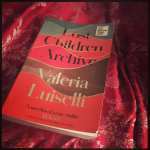
Tommy Orange – There There & Valeria Luiselli – Lost Children Archive
Short Story Collection of the Year:
[image error]
Daisy Johnson – Fen
Poetry Collection of the Year (also sorry, couldn’t pick):
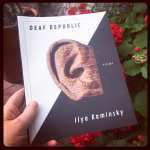
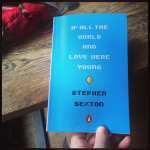
Ilya Kaminsky – Deaf Republic & Stephen Sexton – If All the World and Love Were Young
Translated Work of the Year:
[image error]
Olga Tokarczuk – Drive Your Plow Over the Bones of the Dead
Non-Fiction Book of the Year:
[image error]
Ian Maleney – Minor Monuments
Irish Book of the Year:
[image error]
Sue Rainsford – Follow Me To Ground
Forty (One) Other Books Which Made My Year (in no particular order)
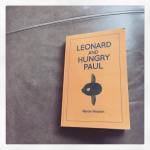
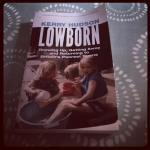
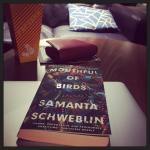
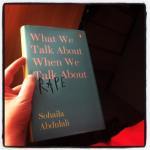
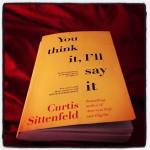
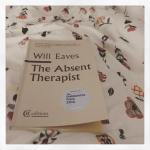
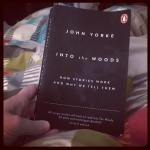
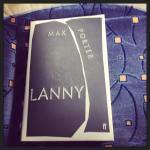
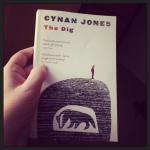
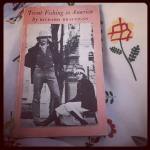
Richard Brautigan – Trout Fishing in America
Sohaila Abdulali – What We Talk About When We Talk About Rape
Curtis Sittenfeld – You Think It, I’ll Say It
John Yorke – Into the Woods
Kerry Hudson – Lowborn
Will Eaves – The Absent Therapist
Samanta Schweblin – Mouthful of Birds
Max Porter – Lanny
Cynan Jones – The Dig
Ronan Hession – Leonard and Hungry Paul
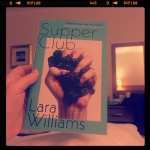
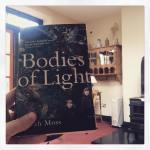
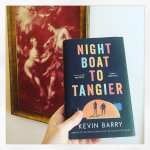
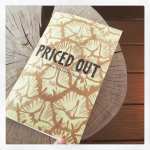
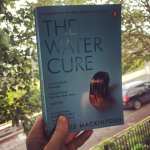
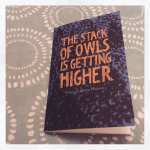
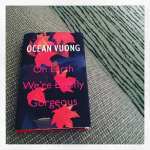
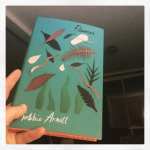

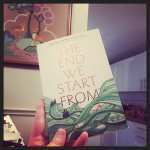
Sarah Moss – Bodies of Light
Megan Hunter – The End We Start From
Kevin Barry – Night Boat to Tangiers
Dawn Watson – The Stack of Owls is Getting Higher
Ocean Vuong – On Earth We’re Briefly Gorgeous
Conor Cleary – Priced Out
Sophie Mackintosh – The Water Cure
Lara Williams – Supper Club
Robbie Arnott – Flames
Sinead Gleeson – Constellations

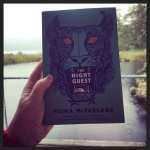
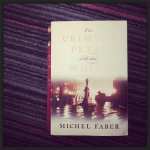
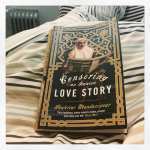
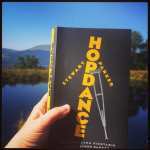
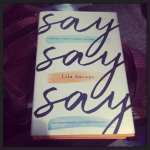
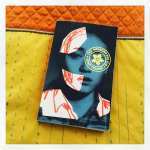
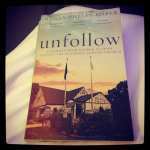

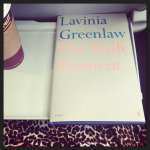
Karen Russell – Orange World
Fiona McFarlane – The Night Guest
Michel Faber – The Crimson Petal and the White
Shahriar Mandanipour – Censoring an Iranian Love Story
Stuart Parker – Hopdance
Lila Savage – Say Say Say
Yoko Ohara – The Memory Police
Megan Phelps- Roper – Unfollow
Caleb Klaces – Fatherhood
Lavinia Greenlaw – The Built Moment
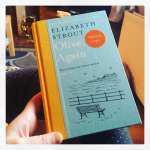
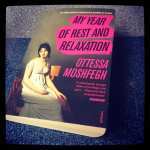
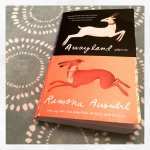
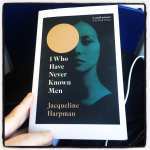
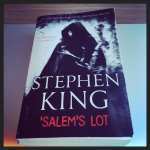
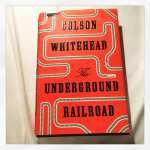
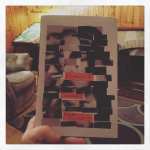
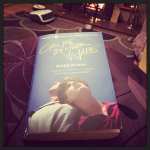
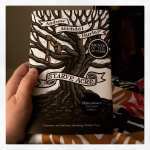
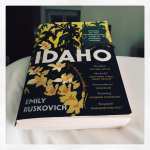

Otessa Moshfegh – My Year of Rest and Relaxation
Ramona Ausubel – Awayland
Stephen King – Salem’s Lot
Colson Whitehead – The Underground Railroad
Steven Sherril – The Minotaur Takes a Cigarette Break
Emily Ruskovich – Idaho
Andrew Michael Hurley – Starve Acre
Elizabeth Strout – Olive, Again
Jacqueline Harpman – I Who Have Never Known Men
Andre Aciman – Call Me By Your Name
Meena Kandasamy – Exquisite Cadavers
December 30, 2019
My Favourite Films of 2019
I said this last year, I’m saying it again this year, it hasn’t been a great year for me and movies. I traveled around too much. I watched a lot of rubbish on airplanes. I didn’t get to spend anywhere near as much time as I’d have liked to in the QFT. Still, I managed to rack up 108 films watched. Some were stand outs. Some were mediocre. A couple were so bad there’s a bit of a contest for clunker of the year 2019. Unfortunately, I peaked far too soon and saw the best film of the year on January 1st. It’s not exactly been downhill since then, but I haven’t seen another movie I enjoyed as much as The Favourite. A couple of these films might technically have first screened in 2018 and I only managed to catch them on the re-run. Roma would have definitely been in my list for last year if I’d managed to see it sooner. Still, the same rule applies to movies as to books: if it was a great movie in 2018, it’s still a good movie in 2019. Honourable mention goes to Mid 90s, The Kindergarten Teacher, Bait, The Souvenir, White Crow, Happy as Lazarro, Extraordinary, Woman at War and Beautiful Boy, all of which I also loved. I’d add Rocketman to this list but this was the last known siting of my favourite yellow sunglasses and just thinking about the movie now brings me pain.
[image error]
At this point I want to say a huge thank you to the QFT for offering me an ongoing home away from home and always being up for a bit of a post-show dissection and continuing to open their doors to people living with Dementia for our monthly Dementia Friendly Screenings. (Check out their website for upcoming screenings. Everyone’s welcome to come along). If you’re not lucky enough to live in Belfast find your nearest independent cinema and watch as many movies as you can in 2020. Until then here are my best and worst of 2019 complete with my original reviews.
My Favourite Film of 2019 – The Favourite
[image error]
“Dear 2019, please take this movie as your benchmark and aim to show me films of a similar exceptionally high standard or films which are even better than this, otherwise I’m afraid I will have ruined the year by seeing my favourite film on January 1st. Ps. Exceptionally good as this was and showcasing as it did the incredible talent of three very fine actors, I think we all could have done without that migraine-giving, optical illusion font.”
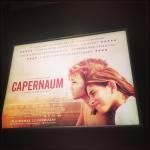

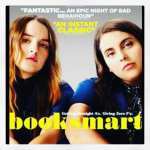

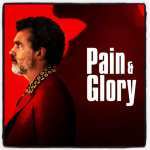





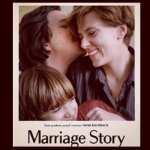

My Top Twelve (sorry I couldn’t keep it to ten) Films of 2019 (in no particular order)
Pain and Glory. “I really loved this. It’s so gentle and everyone involved is so easy to watch and it just looks gorgeous. Antonio Banderas is brilliant though the whole way through I kept thinking he was like Antonio Banderas playing Bill Murray playing Antonio Banderas. I don’t think this is necessarily a bad thing.”
Capernaum – “This does absolutely everything a movie is meant to do. It utterly captivated me for two hours. It was the most georgeously shot film I’ve seen in ages. It had incredible, utterly believable performances from some very young actors. And it made me leave the cinema a slightly different person. Do not miss it.”
RBG. “It goes without saying this is pretty inspiring but I didn’t expect to cry so much.”
Ordinary Love. “Some observations about this movie. 1. Owen McCafferty’s the king of pared back, naturalistic dialogue. 2. I want to live in this house. 3. Liam Neeson has the largest hands I’ve ever seen. 4. It’s really rather good.”
By the Grace of God. “I was not expecting this to completely undo me but it is phenomenally good filmmaking. It approaches the sexual abuse scandal in the Catholic Church from so many nuanced angles it forced me way out of my empathetical comfort zones in a really good way and left me both hopeless and incredibly hopeful. Go see.”
Book Smart. “Oh but we need more clever, funny high school movies like this. Such a good watch.”
Knives Out. “Well, this is an absolute joy to watch. You can just tell every single actor involved is having an absolute blast.”
Little Women. “In which Greta Gerwig proves she can literally do no wrong.”
Marriage Story. “1. Noah Baumbach is a genius. 2. This is worth the ticket price alone for the thing with the Stanley knife which made me laugh harder than I’ve laughed at a movie for a very long time. 3. There’s no way that kid is eight years old. 4. It’s just so good.”
1985. “It’s a long time since a movie hit me this hard. Left the cinema an hour ago and I’m still reeling. It’s so simply done and so devastating. Powerful stuff.”
Eighth Grade. “If I had a 14 year old I think I’d find this film almost impossible to watch. It’s painfully accurate.”
Dirty God. “This is a powerful wee film with an incredibly brave performance from Vicky Knight. Brilliant stuff.”
…. And the Absolute Clunkers. (There were just so many awful movies this year).

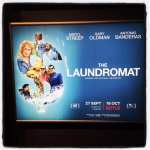

Destroyer. “I was not destroyed by this movie. I have seen more destructive episodes of Call the Midwife. Wise up Nicole Kidman. Just wise up.”
The Goldfinch. “A totally unbelievable film.”
The Laundromat. “I think I have now found my new least favourite genre of movie: Hollywood A-Listers explaining “difficult” political concepts or world events in an irreverent, oftentimes “hilarious” manner whilst occasionally breaking the fourth wall. Ideally these films should be interspersed with helpful, slightly patronising diagrams or graphics illustrating concepts anyone who’s ever read any newspaper ever will already understand. See also Vice and that one about the financial collapse, although it wasn’t half as bad as this.”
December 19, 2019
A Year With Agatha C
[image error]
Having ploughed my way through all seven Harry Potters this year I have decided to set myself a reading goal I might actually enjoy next year. So, in 2020 I’ll be attempting to read all sixty six of Agatha Christie’s crime novels in consecutive order. I’m making an executive decision and ruling out her short stories, collaborations and the novels she wrote under a pseudonym. Even so, it means reading about 5.5 novels per month. I’ll probably begin regretting this decision somewhere around the middle of March. I’ve not yet decided how I’m going to respond to the books. Might write some fan fiction. Might not. Watch this space. If you want to read along with me here’s a list of all AC’s novels in chronological order. Happy sleuthing folks.
Agatha Christie Novels:
The Mysterious Affair at Styles
The Secret Adversary
The Murder on the Links
The Man in the Brown Suit
The Secret of Chimneys
The Murder of Roger Ackroyd
The Big Four
The Mystery of the Blue Train
The Seven Dials Mystery
The Murder at the Vicarage
The Sittaford Mystery
Peril at End House
Lord Edgware Dies
Murder on the Orient Express
Why Didn’t They Ask Evans?
Three Act Tragedy
Death in the Clouds
The ABC Murders
Murder in Mesopotamia
Cards on the Table
Dumb Witness
Death on the Nile
Appointment with Death
Hercule Poirot’s Christmas
Murder is Easy
Ten Little Indians
Sad Cypress
One, Two, Buckle My Shoe
Evil Under the Sun
N or M?
The Body in the Library
Five Little Pigs
The Moving Finger
Towards Zero
Death Comes at the End
Sparkling Cyanide
The Hollow
Taken at the Flood
Crooked House
A Murder is Announced
Thy Came to Baghdad
Mrs McGinty’s Dead
They Do it with Mirrors
After the Funeral
A Pocket Full of Rye
Destination Unknown
Hickory, Dickory Dock
Dead Man’s Folly
50 From Paddington
Ordeal by Innocence
Cat Among the Pigeons
The Pale Horse
The Mirror Crack’d from Side to Side
The Clocks
A Caribbean Mystery
At Bertram’s Hotel
Third Girl
Endless Night
By the Pricking of My Thumbs
Hallowe’en Party
Passenger to Frankfurt
Nemesis
Elephants Can Remember
Postern of Fate
Curtain
Sleeping Murder
December 15, 2019
Best Bookish Bits of 2019

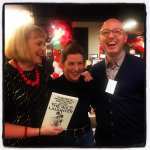
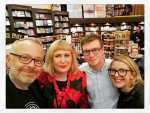

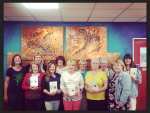



Everyone else seems to have compiled and published their favourite reads of 2019 list already. I’m holding out until January 1st. There are still fifteen perfectly serviceable reading days left in the year and I fully intend to spend about ten of them with my feet up in front of the fire, glass of red in one hand, book in the other. I fully expect to be blown away by at least one book I’ll read in the next few weeks so it’s worth waiting until the end of the year before I decided which books were my favourites.
In the interim I thought I’d blog about my best writing bits of the year instead. I finished my last official event of an incredibly hectic year on Friday and don’t have any commitment, writing aside until January 2nd. I did a quick tally and I think I’ve done around 200 events this year in about 20 different countries. I’ve shuffled around so much I’ve got a bit blurry on exactly where I’ve been and what I’ve done so it was really nice spending an hour this afternoon flicking through my diary and reminding myself of some of the highs and lows, (let’s never mention Portugal again), of 2019. Here, for anyone at all interested, are the ten things I don’t want to forget about this year.

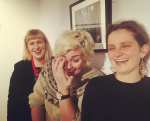
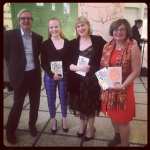
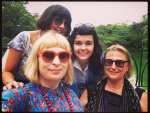


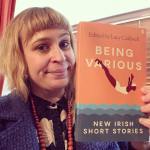

India and all things Indian – I’ve been fortunate enough to visit India twice this year; once in January when I read at the Jaipur Literary Festival and again in September for the Pune Literary Festival and Long Night of Literature Delhi. I also got to take part in JLF Belfast. I’ve met some amazing Indian writers, really had my eyes opened to the importance of reading work in translation, developed a lifelong obsession with paneer and survived my first, and hopefully last, attack of Delhi belly. I’m pretty sure I’ll be back in India again. Here’s a blog about India and here’s another one.
Sea Border – This January I got to tick a lifetime ambition off my list when I was asked to develop and present my first Radio 4 documentary with producer extraordinaire, Conor Garret. Though it did involve braving a snowstorm on Rathlin Island and venturing into a nuclear reactor, I can honestly say it was one of my favourite projects I’ve ever worked on and really helped to confirm my interest in writing for radio. If you missed it you can still have a listen here.
Being Various – I’ve been reading Faber’s Anthologies of Irish Short Stories for years and it was such an honour to be asked by current editor, Lucy Caldwell to contribute a story to the latest edition, Being Various. It’s an amazing book full of incredible stories, many of which are written by my all time favourite writers. It was even nicer to be able to talk about the anthology and read from my story Pillars with Lucy and fellow contributor Yan Ge at Ilkley Book Festival in October. Despite the current mad state of British politics, I’ve never felt a stronger connection to the Irish writing community. I’m incredibly grateful for all the support and encouragement they offer me. I still get a touch of imposter syndrome every time someone calls me an Irish writer. Looking at the calibre of writing that’s come out of Ireland this year alone, you have to admit, it’s a pretty impressive group to be associated with.
The Fire Starters – I published my first book with Doubleday this year. My absolute favourite thing about this experience has been working with an incredible team of wonder women who really support me and believe in my writing. I don’t think I’d have muddled through this year without my fantastic agent Kate Johnson, Fiona Murphy and Alice Youell, my killer editors at Doubleday, and my kick ass team of PR legends: Patricia McVeigh, Hannah Bright and Fiodhna ni Ghriofa. It’s so much easier to release books into the world when you know there are stellar people behind you all the way. The Belfast and Dublin launches were a real highlight of the year, the best part of which was probably watching Hannah McPhillimy cover Billy Joel’s “We Didn’t Start the Fire” and almost remember all the words. It’s still a really lovely feeling to have so many people to celebrate books with. Here’s a blog with some photos of the book launch.
The EU Prize– The Fire Starters also won the EU Prize for Literature for Ireland which was nice because it meant I had enough money to buy a new bathroom and some amazing pink Nikes and it also opened the door for translations in almost ten countries and allowed me to go to a swanky reception in Brussels and meet lots of other incredible European writers and get a wee bit emotional about the implications of Brexit and eat chips with mayonnaise in the street.
Frankfurt Book Fair – I got to read with lots of people this year, many of whom are writers whose work I’ve long admired. It’s also been really encouraging to see programmers taking a risk and pairing me with writers who aren’t also novelists. (More of this please). Conversations with playwright Inua Ellams and essayists Emilie Pine and Ian Malaney have been particularly enjoyable. Here’s a cheeky blog I wrote with advice to festival programmers about how to arrange a good literary event. I have to say that reading with activist and writer, Bonnie Greer at Frankfurt Book Fair definitely has to be the highlight of my year. What a woman. She had the audience absolutely enthralled and was just as inspiring at breakfast as she was talking politics and activism on stage. I’m afraid I was a complete fangirl throughout.
Cove Park – In August I spent a month living in a converted shipping container as part of a very generous funded residency offered by Cove Park, Scotland. I made friends with the bats and the Highland cow in the field next door, rambled for two hours every day, discovered, (and consistently devoured), the best fish and chips in Scotland and wrote my first full length play about a man living with Aphasia which I hope to see produced in 2020. Funded residencies are the stuff of dreams and Cove Park was the dreamiest of them all. Huge thanks to Rebecca DeWald for support and encouragement throughout. I wrote a blog about my rural adventures here.
Slovenia – There have been some strange gigs this year, but none so strange as the cookery panel I took part in at the Slovenian Book Fair in late November. I appeared with a Slovene TV chef and a cardboard cut out of Nigella Lawson to talk about Irish culinary traditions. It was a nice change from talking about Brexit and Borders but possibly not my most erudite moment of 2019. At the end there were three types of cake and stew. I suspect most people in the audience were only there for the free food.
The Museum of Us – It’s proven difficult to keep up all my Community Arts Project whilst traveling so extensively. I’m still facilitating the monthly Dementia Friendly Screenings at the QFT cinema but have only been able to fit in one other community arts project. However, the Irish Writers Centre funded, Museum of Us writing project I facilitated with women from the Falls and Shankil was an absolute blast. I don’t think I’ve laughed as much or drunk as much tea in years and I was so proud of the work the women produced, the friendships they made and the risks they took in sharing their stories. It’s a project I’ll be talking about for years.
Ty Newydd – I’ve facilitated some fantastic writing workshops this year at the John Hewitt Summer School, in Poland at Literary Sopot, in high schools in the Karmoy area of Norway and at the University of Ulster, but my week long short story residency in the Welsh writing centre Ty Newydd was my secret favourite. I’ve never had students work this hard or this enthusiastically at their writing and, as a tutor, I’ve never been prouder of the stories they’d produced by the end of the week. Also, it should be noted, that the food in Ty Newydd is so good it’s almost on a par with Annaghmakerrig.
Write Around the Royal – I’m rubbish at this. There were too many good things in 2019. I couldn’t possibly leave out my amazing week as writer in residence at the Royal Hospital Belfast, reading with staff and patients and writing tiny microstories about the goings on in the Royal. A huge thank you to Paula McHugh the Trust’s Arts Coordinator for moving Heaven and Earth to make this possible. If you want to find out more or read some of the stories, you can check out a wee blog I wrote about it here.
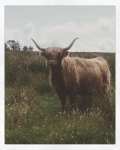

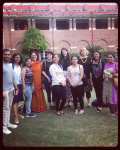





November 10, 2019
Write Around the Royal


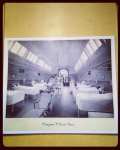



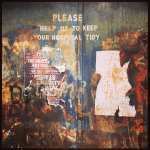
At the beginning of October I spent the most amazing week as writer in residence in the Royal Hospital, Belfast. A huge thank you to the wonderful Paula McHugh, arts coordinator in the Belfast Trust who conceived the idea and made it possible and worked tirelessly all week to ensure the staff and patients got the most out of the project and I had a wonderful experience. I won’t pretend I wasn’t primarily drawn to the idea of being a writer in a hospital because of my ongoing Casualty obsession. I had a vision of myself wandering round the wards in a white coat and stethoscope, handing out stories and sound medical diagnosis, based solely on years of watching BBC medical dramas.
I only got to wear a white coat once, (big thank you to the blood lab for making this dream come true), but I did have the most wonderful week in the hospital reading to staff and patients and writing some tiny little microstories which have been posted throughout the hospital. (I’m ashamed to say it’s taken me almost a month to get these stories blogged. I’d intended to do this right after my residency, but got swept up into lots of travel and book deadlines). The residency gave me an awful lot to think about and I can honestly say it’s been one of the most challenging and simultaneously rewarding experiences of my writing career so far.
Firstly it served as a timely reminder in the midst of this season of frantic travel and getting on like a literary type, that I still love and believe in community arts and can truly say that I haven’t felt as much like myself in months as I felt drinking tea and swapping stories with the wonderful people I met through the Royal’s Dementia support team. Thank you for reminding me that my soul needs to be around non-literary people every so often and that I need to continue contending for space and time to keep working on community arts projects.
Secondly, I left the Royal hugely convinced, (and I was already a strong believer), that the arts needs to play an integral roll in our health and well-being provision. It didn’t take more than a few hours on the wards to see how both patients and staff, responding positively to very simple arts activities, (reading and writing exercises, storytelling and listening), appeared more relaxed and generally positive. I met so many people who’ve spent a really long time in hospital and these little windows of creativity and imagination can really break up the monotony of their day, whilst staff members taking half an hour out of the pressure of ward duties or caring responsibilities, all said how much the arts activities helped them to relax and focus. We need more of this kind of stuff; not just as a token add-on to healthcare, but as a carefully thought through integral part of how we care for vulnerable patients and over-worked staff members.
Finally, the main thing I took away from my time as a “pretend health care provider” was an enormous amount of respect and admiration for the actual professionals. These people are amazing. They seemed to be relentlessly optimistic and enthusiastic, often working in difficult and truly distressing situations. It was such a privilege to get some behind the scenes snapshots of exactly what their jobs involve and I just hope my time on the wards and the little stories I wrote have served as some kind of small encouragement and a token of the appreciation I have for the people on the front line of the NHS.
I hope to get back on the wards again at some stage in the future. Until then, I am, if anything, watching Casualty even more keenly. Here are ten of my favourite microstories from Write Around the Royal. We hope to work on putting together a small collection in the future so the staff and patients might have access to these stories.


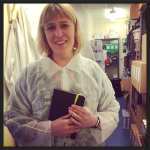




The Small Hospital
Back in the days when nurses were still starched and formal in pinned caps and aprons, my mother was a theatre nurse in the Royal Victoria. I was barely old enough to understand the difference between a real hospital and the make believe ward I kept for poorly dolls and teddies. My charges slept patiently in shoe box beds, waiting for toilet roll bandages and elaborate operations I’d perform with kitchen cutlery. I was doctor, nurse, surgeon, anaesthetist and concerned relative all rolled into one. I was also God; killing my patients as I saw fit, resurrecting them five minutes later to begin the diagnosis process all over again. I had a plastic stethoscope. I took this as a symbol of authority.
On the other side of the city, my mother tended her patients with similar devotion. At night, while the ward swam with silence, she sat under a desk lamp listening to their laboured breathing and knitting tiny sweaters and hats from scraps of leftover wool. She’d bring her creations home to me in a prescription bag and watch as I dressed my patients in their swanky new gear. In these small moments we were both caregivers. We were both giving care.
2. Shrinking Stories
Before my stroke I was a furious reader of novels. I read all the classics: War and Peace, Moby Dick, everything Dickens had turned his hand to. The bigger the book, the more I managed to draw from it. Reading was like excavating for treasure in a vast and splendid desert. Now my storied world is shrinking. I can no longer manage a novel. I have digressed from short stories to poems and finally sentences of the smallest stature. Even then, I often find my fuddled brain cannot make it from one full stop to the next.
In telling you this, it is not my intention to evoke pity or even quiet concern. Small is large to me these days. Recovery has taught me this and other hard lessons. The least little step of progress now seems a mighty leap and while, for the moment, I have lost my ease with novels I have instead, discovered the comfort which can be found in a single word held in the mind and slowly savoured: ‘home,’ for example, or ‘family.’
3. Cappuccino
I only came in for a cappuccino. I didn’t even really want a cappuccino. I wanted something stronger or perhaps something which would make me feel stronger, something like scaffolding, for I was in danger of falling apart. I came in for a cappuccino, but the cappuccino was really just an excuse to leave the ward for ten minutes. I needed an excuse. I’d been there all night, sitting by his bedside, not daring to leave and all the time wishing to be sat anywhere but here, holding his hand as I tried to imagine him grown up, years from now, in a place that wasn’t here. I didn’t even really want a cappuccino. I wanted something that would make me feel older and braver, more like a proper mother, less inclined to keep glancing at the door, waiting for a real adult to appear and take charge.
This was a lot to be asking of a takeaway coffee but the woman at the till seemed to understand how much was riding on this cappuccino. “Are you alright, Love?” she asked, as she slid my cup across the counter. Our hands touched briefly. She smiled. Though I could not have explained why, I knew that this, and the cappuccino, would be enough to keep me going for a little while longer.
4. Pyjama-Land
It is not difficult to spot a resident of Pyjama-Land. They walk amongst us every day. They sit in the Coffee Doc, sipping small Americanos and Lattes whilst devouring the morning papers. They congregate in small groups by the front door and can often be seen in the shop, scanning the magazine rack for something they’ve not yet read. They are slow on their feet and often unsteady. Drip stands, oxygen tanks and concerned relatives trail behind them like leashed pets.
The residents of Pyjama-Land look just like regular people. They have faces and hair and speak our words. They would be almost impossible to spot if it weren’t for their outlandish dress sense. It is unclear why they insist upon sporting nightwear at all times, in all settings, no matter how public. They seem overly fond of dressing gowns and bathrobes. They prefer slippers to other, more practical forms of footwear. They sport pyjamas in every conceivable cut and pattern: tartan, fleece, cartoon print, satin, onesies for the younger contingent, M and S button-ups for the more sedate. They look like they’re always heading to bed.
It is possible, with practice, to see past the pyjamas. If you are brave enough to look a resident of Pyjama-Land straight in the eye, you will notice that they are peering through you to the hospital doors and the world beyond. You will see a kind of hunger in the way they stare at the road leading away from this place. You may even begin to imagine them slightly inclined as sunflowers incline towards natural light. You will want to lead them outside, one by one, in a gentle manner. You will want to say, “on you go. The world is waiting for you.” You should not say any such thing. It is easy for you in your jeans and trainers. You are dressed like an outside person. You know how to brave the cold. There is no heat in a pair of pyjamas and these people aren’t ready for real world clothes.
5. Healing Bell
Beneath the Healing Bell an elderly lady stops me to ask directions. She is looking for the ninth floor. She shows me her appointment letter. It definitely says Floor Nine. We are both confused. The lift behind us clearly states there are only six floors in this building. Later, I will wonder why I didn’t say to the elderly lady, “maybe your appointment is in heaven?” We could have had a laugh together. Later still, I will realise that telling an elderly lady her appointment might be in heaven would not have been a good idea.
We stand together, this lost lady and I, in the shadow of the sculpture’s downturned funnel. It is like being captured beneath the open end of an old-fashioned hearing trumpet. I listen to what she has to say. She has seen my Writer in Residence badge, (a makeshift affair run off on a computer printer and hastily laminated). She has taken me for a proper staff member; someone who can navigate the maze of these corridors. She couldn’t be more wrong. I tell her that I’m just a writer. “I feel a bit lost here too,” I say. The elderly lady sighs and says she’d better look for someone who can actually help her. I point out a nurse wearing the sort of badge you can’t make at home on a laptop.
I feel disappointed with myself. I am used to being able to help older people. Here, it is different. Here, I am still learning how to help when I can’t prescribe antibiotics or remove stitches or say with any great certainty, “everything’s going to be fine.” I walk over to read the gallery notes for Healing Bell. Apparently, this sculpture is to do with feeling vulnerable, human and, somehow, messy in these kind of spaces. I might go get a coffee and stand under it for a little longer.
6. Car Park
The queue for the visitors’ car park has now reached Lisburn. In a Vauxhall Astra, six vehicles from the front of the line, Albert McKeown has been waiting to enter the car park since last February, shuffling slowly forwards once car length at a time. He has been surviving on a diet of cereal bars and orange Fanta, listening to nothing but the Now That’s What I Call Dance Musiccd his daughter left in the stereo the last time she borrowed the car. He has not yet lost hope. Albert McKeown is made of sternish stuff. In the past he has completed two marathons, one triathlon and a single last minute Christmas Eve grocery shop, which was, in his opinion, more harrowing than all three endurance events combined. Albert McKeown is reasonably confident he will gain access to the visitors’ car park at some stage in the next few weeks. Patience is not Albert’s problem. Since his retirement, he has all the time in the world. The problem is, Albert McKeown’s been sitting here in his Vauxhall Astra, with the dance music thumping, and the rain coming down in sheets, for so long, he’s forgotten why he came to the hospital in the first place. He should probably just turn around and leave, but he knows he won’t. Such a move would feel a little too like admitting defeat.
7. The Letter
They told me I should write to you. Now, the transplant’s over and she’s getting better. They said it might help to write things down. I’m not sure whether it’s me or you they meant. Maybe this letter will help us both. I’ve begun to write it a dozen times, but I’ve not yet made it past the first line. You see, I don’t know what to call you and how can I begin such an important letter, if I don’t know who I’m addressing it to?
The transplant team won’t tell me your name or anything about your loved one. I say loved one, because I don’t know if it’s a child you’ve lost, a partner or sibling; whether they were a boy or a girl, a man or woman. I have my suspicions -a mother knows- but I can’t say for sure. It’s not my place to speculate. I don’t know the shape of your loss; whether it was sudden, or slow and blunt like a pressing bruise. I can’t speak into your sadness either. Every loss has its own sore song. Everyone copes in a different way. I choose to write this letter. You can choose to read it or not read it; to respond, or leave things be. Either way, I understand.
If I could get past the first line, I’d write, “I also know what it’s like to watch someone you love disappear. How you’d do anything to hold them together but your arms aren’t strong enough.” And I’d try to say something like thank you, though thank you’sfar too small a word for what you’ve given us. I’d say, thank you, with a photograph if I could: my baby girl, eight years old now, riding a bike for the very first time. I’d say thank youwith a list of all the things we thought she’d never do. Thank you, I’d say, and also sorry. But I don’t know who I’m writing to.
Dear Stranger then. Dear Friend. Dear Saint/Angel/Superhero. Dear Brave Soul who gave my child a heart which did not belong to her. Dear Heart, which is what Aslan whispers to Lucy in the Voyage of the Dawn Treaderwhen she’s much afraid and failing. “Courage Dear Heart,” Aslan says, and I’d also whisper this to you, hoping my dark days might speak to yours. If no one else has said this yet, let me be the one to remind you Friend, you are stronger than you think you are.
8. Tunnels
Tonight, on my way home from the wards I thought about the tunnel which runs beneath the Westlink, joining the Royal Hospital’s pharmacy department to the City Hospital’s pharmacy department. Picture this tunnel if you can. It is approximately twenty centimetres in diameter and round, like a Pringles’ tube. It is not unlike the chute system used to shuttle receipts, banknotes and small change from the cash desk to the accounts department of the old-fashioned department store where my mother once took me to buy my school uniform. Picture it. Imagine also, the noise made by this system when in use: a gentle whoosh, similar to the noise made by automated revolving doors. (Do not imagine the revolving doors at the front of the Royal which are more likely to sound like trapped patients swearing than anything gentle or whooshing). Note, that the distance between one hospital and the other is a matter of less than a mile. Walkable? Yes. But how much more efficient to fire prescriptions backwards and forwards in sealed canisters, each one equipped with its own ward-specific microchip.
Tonight, stuck in traffic on the Westlink, I began to imagine all the prescription canisters whizzing about, like plastic bullets, beneath my wheels. (This analogy holds well in regards to size and traction, though the bullets in question are more inclined to heal than harm). I could not keep from speculating on other things which, on slower days -when the need for penicillin or ibuprofen is minimal- might be transported from one hospital to the other in a similar fashion.
Love notes from pharmacy students enduring placements on either side of the ring road. Sandwiches. Mix tapes. Bookies’ tips and baby photos. Poetry. Halls Soothersor Locketsintended for colleagues afflicted with tickly throats. (Perhaps, falling closer to prescription than kindly gesture?) Wallets and mobile phones left behind at corporate training events. Traybakes. Biro pens branded with the names of drug companies. (Also, similarly branded post-it notes and mouse mats). Invitations to the Christmas shindig. Charitable donations and sponsorship forms. Cheese.
I found it difficult to stop imagining items which might be shoved inside a twenty centimetre tube and fired across the city. The whole system felt both futuristic and antique, like something which might sit easier in a fairy tale story than a hospital pharmacy.
9. Forgetting and Remembering
They will try to tell you that Dementia is a forgetting kind of illness. They will draw your attention to all the things which have become lost or misplaced. Words. Memories. Simple everyday acts such as boiling a kettle or reading a paperback novel from cover to cover in the correct order. They will say it is the sort of illness which is only ever, always, sad and sometimes they will be right in this.
They will not bother to tell you that the same illness can take with one hand and give with the other. That you might find yourself in a room with several brave souls gathered round a coffee table, grinning. That you will swap stories about childhood picnics, discuss pudding for breakfast and quote tiny mis-remembered snippets of Rabbie Burns poetry. None of these diversions will have been asked for or anticipated in any way. They will make no ordered, reasonable sense. You will nonetheless find them both wonderful and welcome; just the ticket for a drizzly Friday afternoon. You will look at these strangers; their minds made loose and generous by this bad disease. Your face will ache from too much smiling. You will realise you have forgotten to feel sad for them.
10. Robots
The pharmacy robot is actually two robots. They are best described as elaborate vending machines: self-stacking, self-sorting, self-serving. Their twin arms dart backwards and forwards across the aisles arranging tablets, creams and medicines of all sorts by bar code alone. Each robot lives in its own glass room, one shelved wall pressed up against the other so there is not even a centimetre of spare air separating them. They are Siamese twins these pharmacy robots. The first is named Wallace, the second Gromit, though their names badges have long since fallen off and none of the pharmacists can remember which is which.
The lady who keeps watch over the pharmacy robots is called Catherine. Catherine has been with the robots for years. She knows all their smooth moves. She can even tell when one or the other is in a mood. Though it might sound daft to an outsider, Catherine thinks of the robots as children and sometimes talks softly to one or the other when they’re having an off day. The pharmacy robots find the sound of her voice soothing. They try to talk back to Catherine. They say, “we love you, Catherine,” and, “some days, your smiling face at the window is the only thing keeping us going.” They say, “please don’t ever leave us,” for they can’t imagine the world without Catherine in it. She is the only kind of mother they’ve ever known. Unfortunately, the pharmacy robots do not speak human. They cannot understand Catherine when she talks and, when they try to talk back, all Catherine hears are clicks and gentle, metallic whirrs.

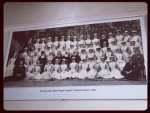




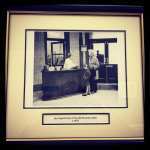
September 28, 2019
Nine Days in India

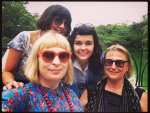
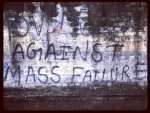
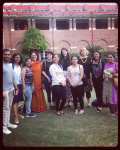

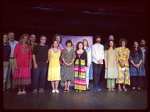

These days most of the emails I receive begin with the line, “I’m not too sure where you are right now….” If I’m being honest, I’m not too sure where I am right now. I got out of bed in the middle of the night five days ago and, fooled into believing I’d been sleeping in my own bedroom in East Belfast because the hotel pillow was exactly the same shape and consistency as my own, walked straight into a wall in the bedroom I was actually occupying in Pune, India. It has been a season of hectic travel and it’s not set to slow down for a good few months yet. I am doing my best to preserve a sense of normalcy whilst on the road: keeping contact with the important people back in Belfast, taking comfort in books and illegally dowloaded episodes of Casualty, writing and swimming whenever the opportunity arises. I’ve come to realise that there are certain practices which allow me to access aspects of home and feel at least a little more rooted even when I’m incredibly transient.
This last week or so, I’ve been traveling in India with a delegation of EU writers, facilitated by Alexandra Buchler and the organisation Literature Across Frontiers. Alongside Turkish writer, Ciler Ilhan and Polish writer and filmmaker, Marta Dzido I’ve been able to take part in panel discussions at the Pune International Literary Festival, read and teach writing workshops with some wonderful Indian students and writers at Universities in Delhi and also take part in the Long Night of Literature, Delhi which is like a speed dating event for European writers. Over the course of a five hour evening fourteen of us presented our work in short twenty minute sessions as hundreds of attendees circulated round the various rooms at the Cervantes Institute in Delhi. It was a crazy and slightly overwhelming experience, giving ten consecutive readings to ten different audiences and delivering the ubiquitous, “what is happening with the border in Ireland” talk, ten different times, but I had a wonderful evening and met some incredibly interesting people. I might be in bed sipping Lemsip and trying to resurrect my speaking voice this morning but I’d probably do it all again tomorrow evening if I had the chance.
I leave for home this evening. I have 36 hours in Belfast before I head off to the EU Prize-giving ceremony in Brussels. I know I’ll barely have time to process my laundry before I’m leaving again so I thought I’d take a few minutes this morning to pin down my two favourite realisations about the last nine days in India. It has, as always, been a thought-provoking, exhilarating and deeply unsettling experience. I’m leaving with so much to consider. I am not quite the same person I was when I arrived last Friday morning.
Firstly, I am extremely thankful and encouraged by the opportunities we had to share with students at three different educational programmes in Delhi. The young writers we met were passionate, driven and keen to engage with the issues contemporary India is currently facing. I met a wonderful young women who is publishing articles abut human rights issues in Kashmir, despite the risk this poses to her own personal safety. I met many young people grappling with the problems faced by an increasingly pluralistic India where so many diverse identities and cultures have to live side by side in close confines, and I met an amazing bunch of young women at the Vedica Scholars Programme who are learning how to challenge inherent misogynistic attitudes and excel as business people, artists and cultural leaders. It has been incredibly inspiring to hear so many stories of driven, passionate young people determined to shape the future of their country.
I’ve also been freshly reminded of my own place in the world as both a European and International writer. Conversations with established writers and literary professional from across Europe and India have proven to be timely reminders of how important it is to collaborate, learn and share with each other. As I return to Northern Ireland and the claustrophobic feeling which rises up in me every time I think about the implications of Brexit it is good to keep focused upon what we are fighting for as we continue to insist upon strong international links across the sector. This week I’ve listened to people talk about social change, protest and healing in their own individual, national contexts. I’ve heard how their writing responds to injustice and huge societal issues. I’ve sat with them, commiserating over coffee and wine and strange, Indian deserts about the state our various countries are in. I’ve laughed a lot and shared stories and discovered, (as I always discover during these trips), that there is so much unity to be found in our diversity. there is so much we still need to learn from each other. Surely, this is something worth fighting for.
So, it’s back to the East for a few days or slightly less spicy food and being able to drink straight from the tap. I’ll be glad to see the grey streets of home again but I am glad to have been here this week. India always has something to teach me.



